

KAMAKURA
On a very, very rainy day my guide Mr. Maruyama & I, we took the bus to Kamakura for me to have a glimpse of the historical town.
We traveled in the cleanest bus I have ever seen, and once off the bus we walked and visited:
Kotokuin Temple - Hasedera Temple - Hokokuji Temple - Hachimangu Shrine - Engakuji Temple

Our first destination in Kamakura : Kotokuin Temple
The temple is well known for its "Great Buddha" (Daibutsu). it is a huge statue of Amida Buddha, almost 13.5 meters tall, it was cast in bronze circa 1252. It was once indoors, but after a tsunami which caused substantial damage it was decided to place it outdoors. The majesty of this Buddha is awe inspiring. One keeps muttering 'WOW', with each step, approaching the statue.
Entrance to the temple being guarded by two guardians. For details on these guardians see Hachimangu below
Purification water for prayers
From left: Burning place for candles, a building in the temple and shoes for Buddha - donated by school children.
Our second stop : Hase-dera Temple [Devoted to Kannon - Goddess of mercy]
Buddha's feet and Ryoen Jizo [Representing good match - to find a good mate]
This temple has several things to see all in one place: Lovely paths, a beautiful temple, buildings, gardens, statues and views of the bay to name a few.
In the water gardens one sees a symbol that puts the western world on edge : a swastika. It is not a sign of evil in Japan. it has been used for thousands of years. On the contrary the swastika represents positive things like love, compassion, well being and strength among other concepts. However, as a result of our western neurosis, Japan has decided to remove swastikas from identifying temples on maps and replaced them with pagodas. At least during the 2020 Olympics.
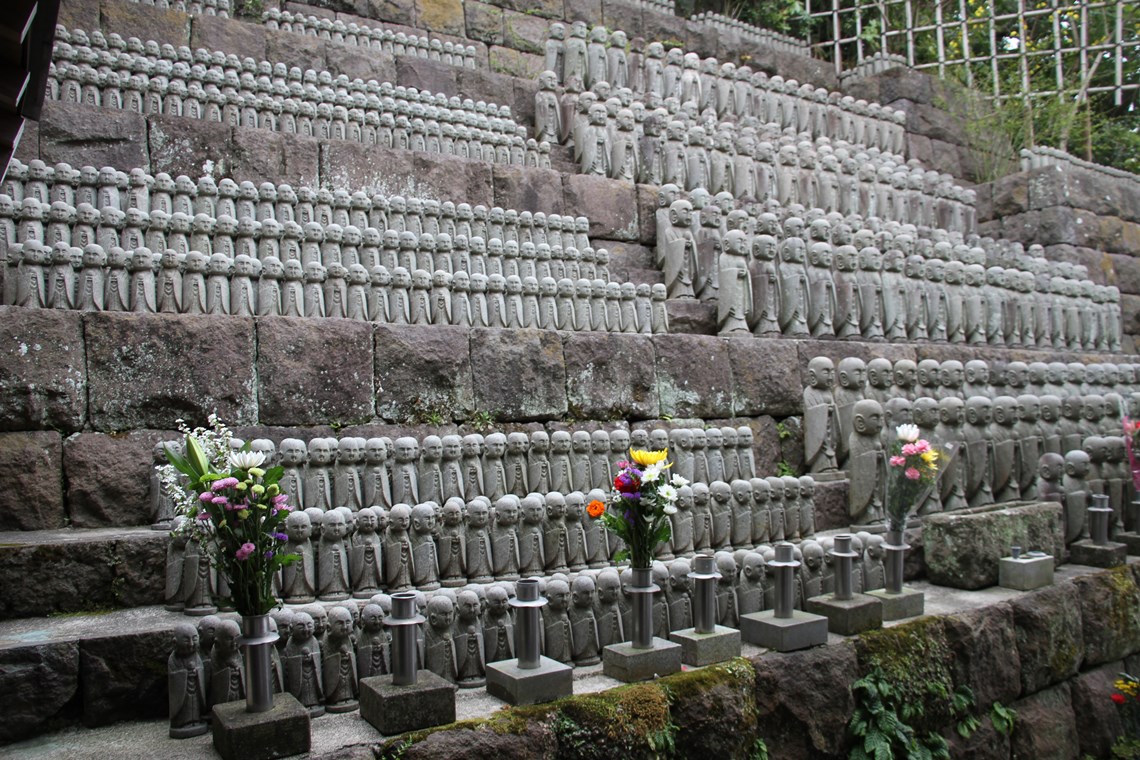
Thousands of stone Jizo statues, in rows, are there to comfort the souls of unborn, aborted, or dead children.
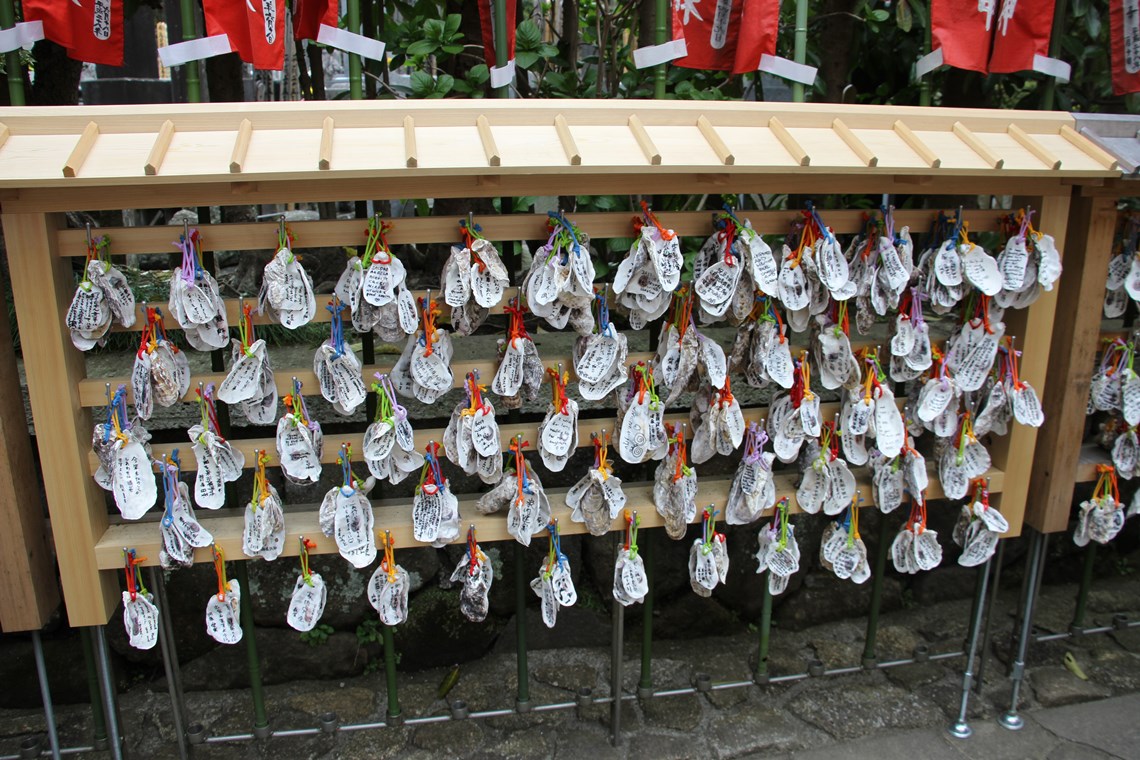
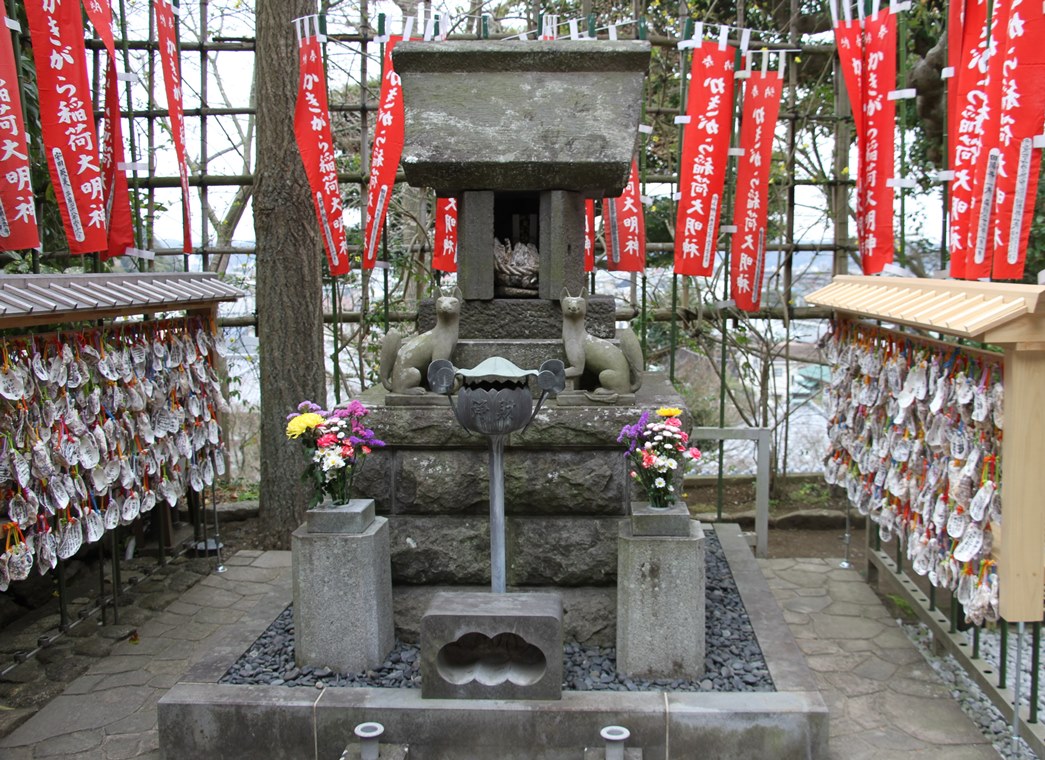
People seem to have too many requests from religious powers... A thank you for allowing me to see these beautiful sights would have been mine.
Above: One of the largest bells in Kamakura; mantras that would enlighten one, whether read or touched; the view of town and the bay; and an amazing rock garden. [All four are thumb nails and can be enlarged].

After lunch we walked to: Hokokuji Temple
This small, secluded, temple was founded in 1334 and became the family temple for both Ashikaga and Uesugi clans.
Entrance in the rain, people doing selfies, and paths leading to the temple
Five Ring Pagodas - representing: Earth [the square piece at the bottom], Water, Fire, Wind and Space

The famous bamboo grove and the tea house that gave us shelter from the incessant rain.
We continued our tour of Kamakura : Tsurugaoka Hachimangu Shrine
It is Kamakura's most important shrine. Founded in 1063 it is dedicated to Hachiman, the patron god of the samurai. It holds the bodies of Emperor Ojin and Empress Jingu.
There are three bridges entering the Shrine. Two flat ones and another in the middle that is arched. During shogun times there were only two. The arched one was for the shogun to use and the flat one for the common folk.
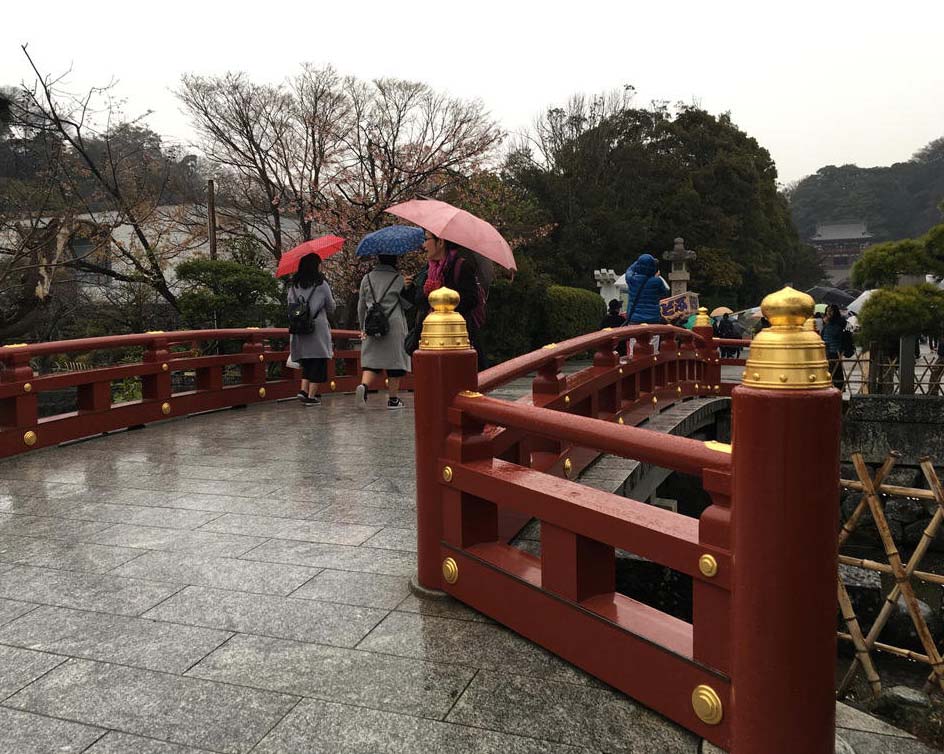

The main hall (Hongu or Jogu) stands on a terrace at the top of a wide stairway.

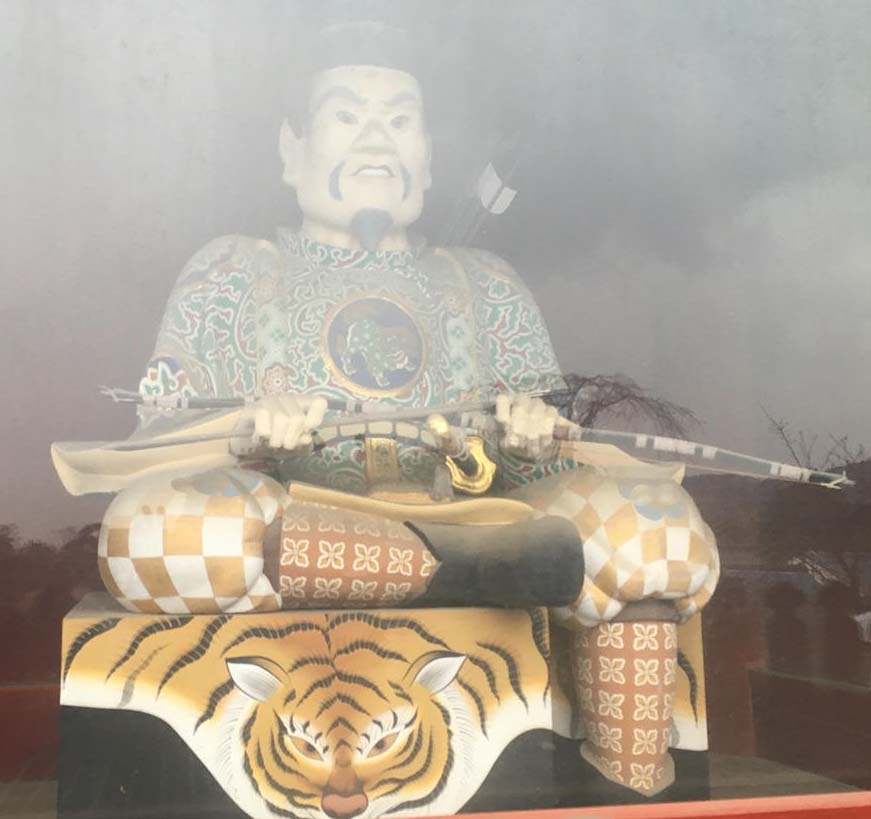
The two wrath-filled guardians of the Buddha are called "Nio" and stand at the gates of temples. It is believed they fight off evil spirits and keep temples free of demons.
The guardian on the right always has his mouth open as if uttering the word 'ah' meaning birth, and the one on the left has its mouth closed as if in death.
Maiden Dancing Stage at the base of the stairs
There are many carvings around the gates and the shrine, among them a white rabbit looked lovely.
Purification area, Sake barrels donated to the shrine and detail of the shrine
With the rain continuing - full force - our last stop of the day was the Engakuchi Temple. It is a Zen temple founded in 1282, a year after fighting off the Mongols' invasion attempt. Unfortunately I did not have much energy left having been soaked in rain all day and took just a couple of pictures at this site.
Sanmon - Main Gate
As it is with all other temples you have to climb various steps to reach the main building.
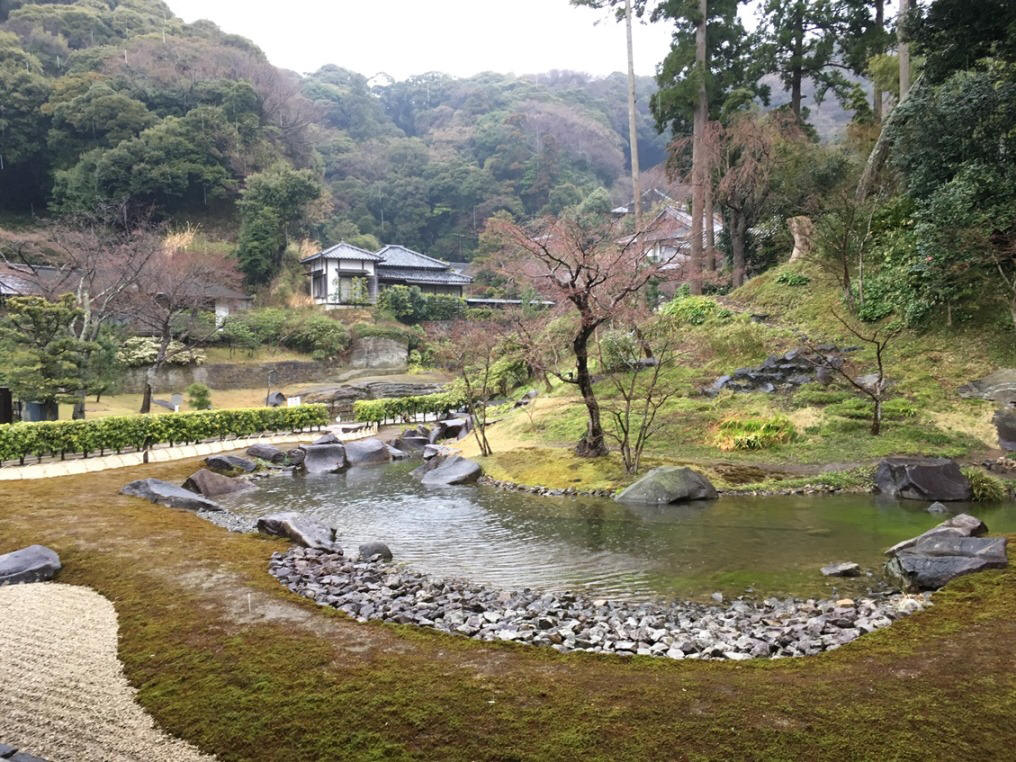

Back to Japan
Back to Main Page
Back to World Map